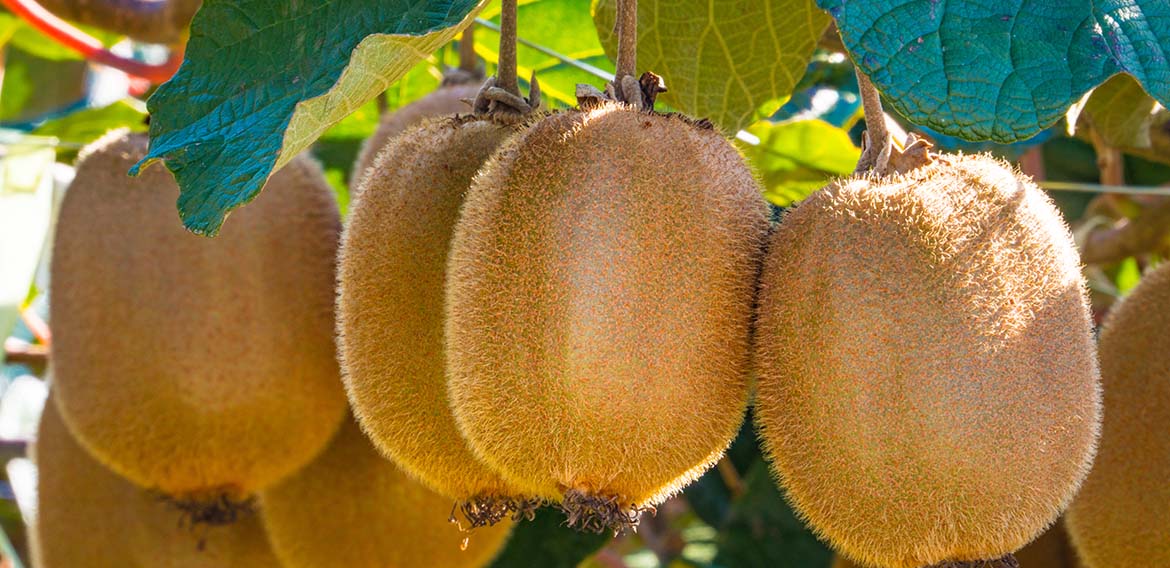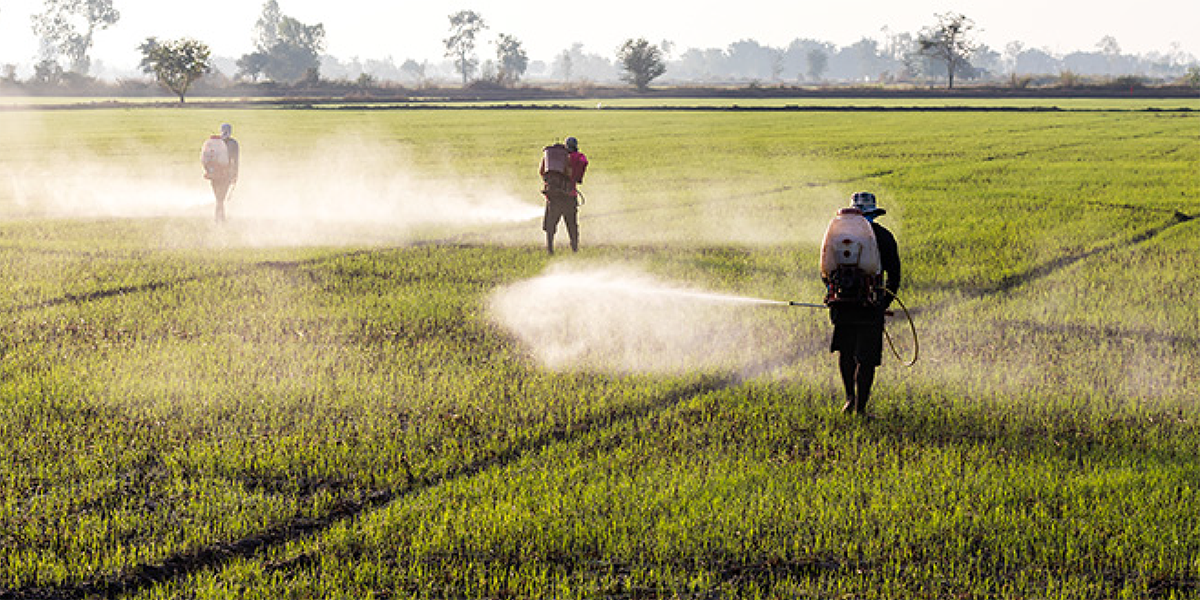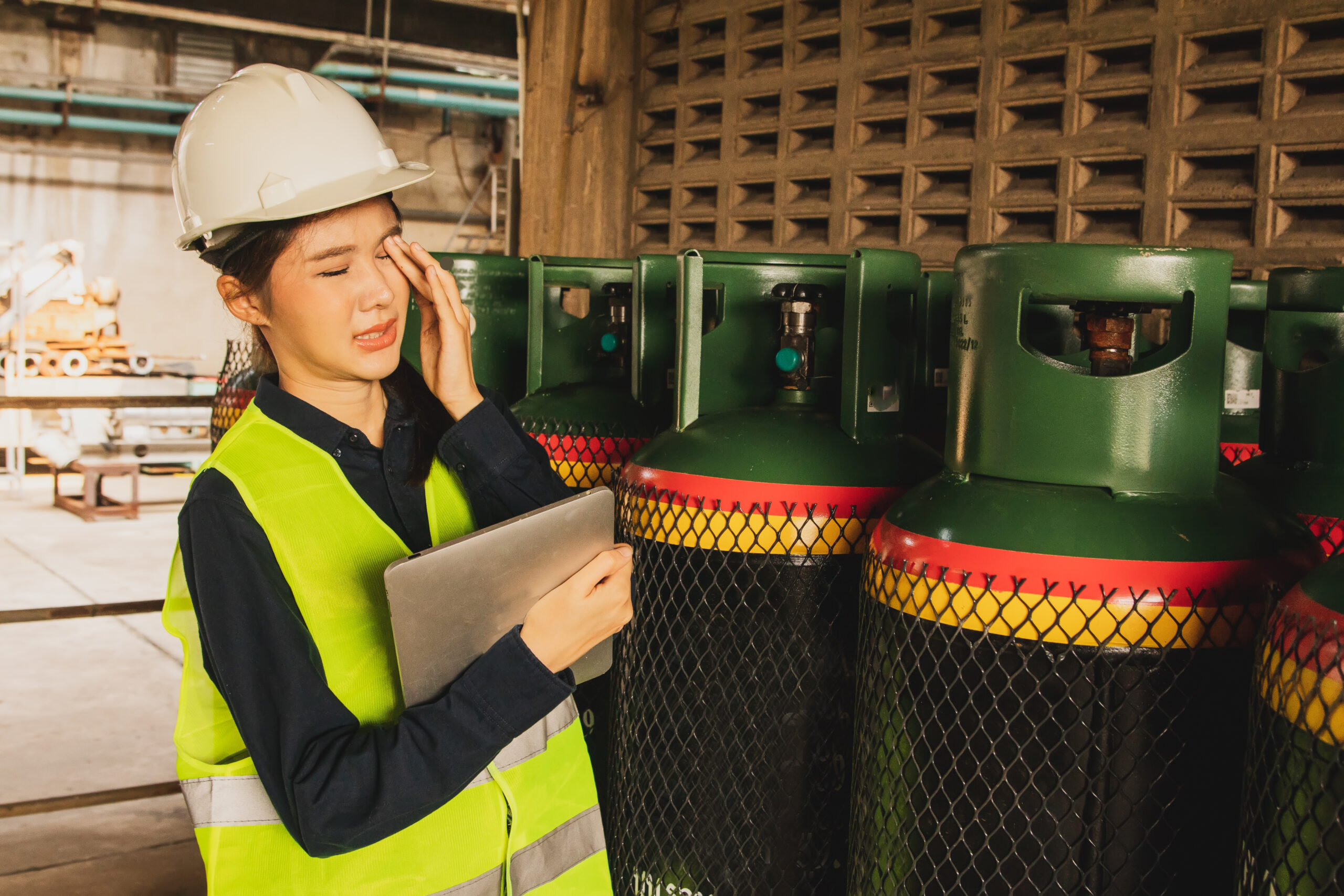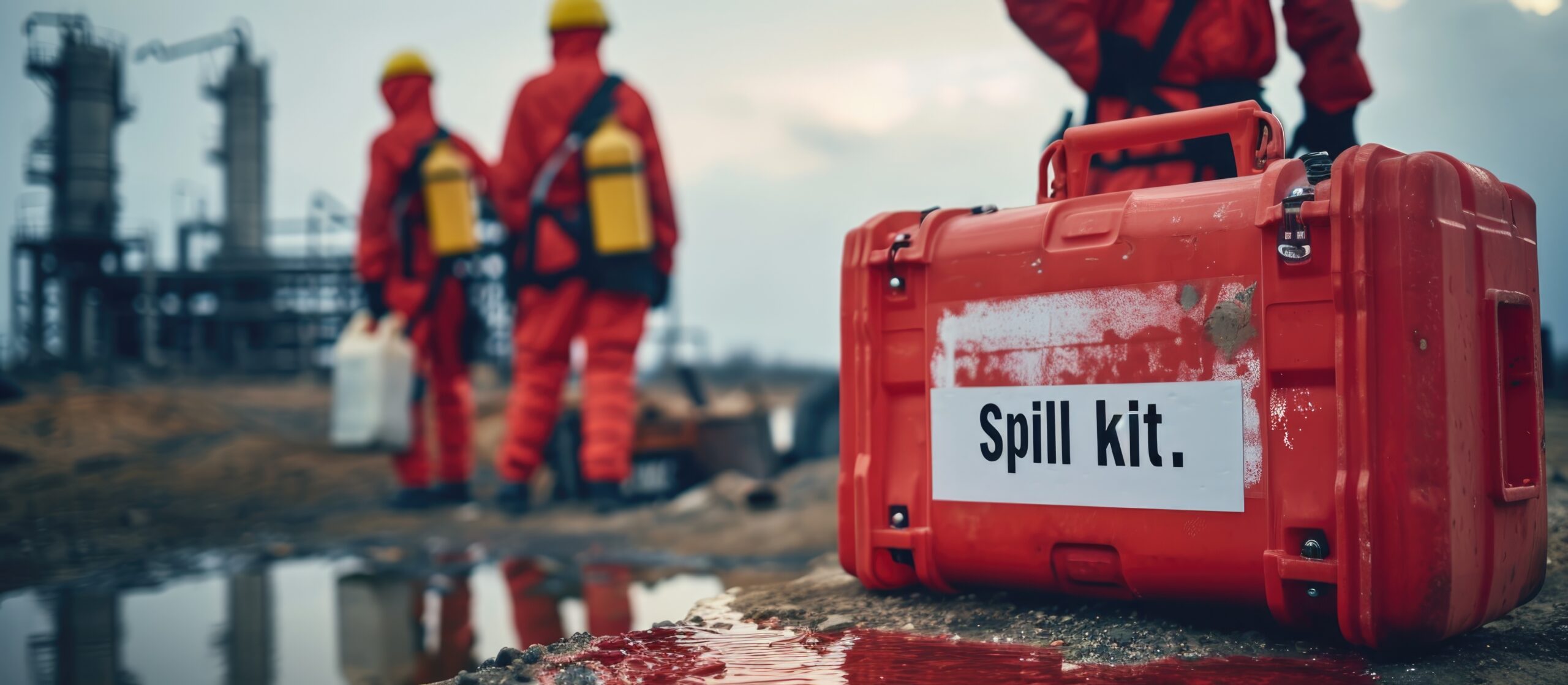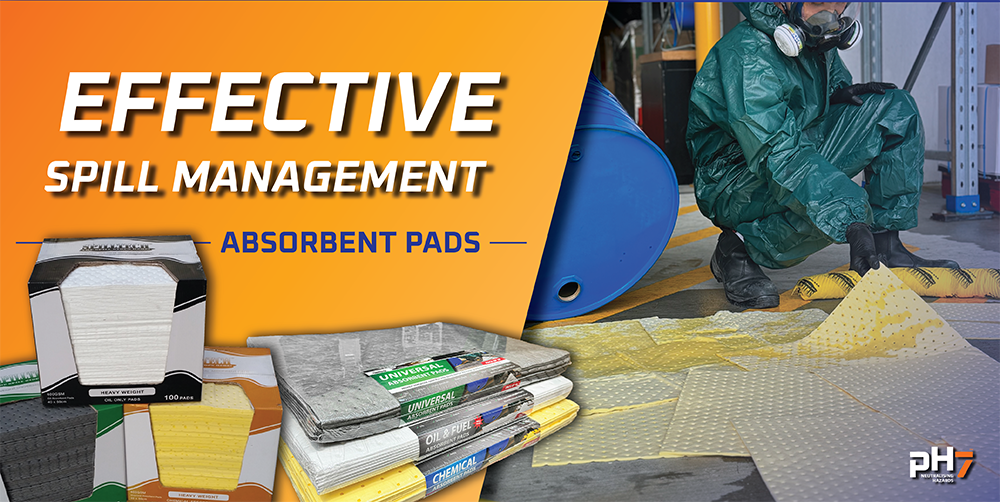There’s a growing body of research about long-term health effects of herbicides, pesticides and agricultural chemicals like – Hi-Cane. These include depression, problems sleeping, mood changes and, at the worst end of the scale, cancer and neurological diseases. All of which can be likely factors in any suicide statistic.
Research published last year by Dr Annette Beautrais for RHAANZ and funded by AgResearch showed that although the overall number of annual farm-related suicides seemed to be decreasing between 2007 and 2016, the young made up a high proportion of those figures. Considering all 185 farm suicides, 12% were aged less than 20 years, one third (32%) less than 30 years, and almost half (47.5%) were less than 40.
What you should know about Hi-Cane
Hi-Cane is a plant growth regulator which promotes uniform budbreak and flowering of kiwifruit, and earlier concentrated flowering of apples, but comes with several caveats:
- Toxicity
- Toxic
- It may be fatal if swallowed, inhaled or absorbed through the skin and may cause organ damage from repeated oral exposure.
- Harmful
- It severely irritates skin and eyes and may cause sensitisation from prolonged skin contact.
- It may cause reproductive / development damage from repeated oral exposure.
- In combination with alcohol Hi-Cane may produce a severe unpleasant temporary reaction known as ‘cyanamide flush’. Do not drink alcohol for 24 hours before and up to 7 days after using Hi-Cane.
- Ecotoxic
- Harmful to aquatic organisms. Avoid contamination of any water supply with product or empty container
- Toxic to terrestrial vertebrates. Do not allow animals to come into contact with spray mist or tank washings. Dogs appear particularly sensitive to Hi-Cane poisoning and must be restrained away from any spray operation. Non-grazing animals should not be exposed to residues on grass for three days and grazing animals for seven days.
- Toxic to bees. Spray must not contact plants in flower if they are likely to be visited by bees.
- Spray drift hazard. Spray drift may cause serious damage to other desirable plants. Casuarina spp., lemons, tamarillos and gum trees are very susceptible. Do not allow drift to occur outside the target area.
- Toxic
One can see from the detail included on the product label, that however valuable Hi-Cane may be in crop production, its use, handling and storage needs to be managed responsibly with these risks in mind.
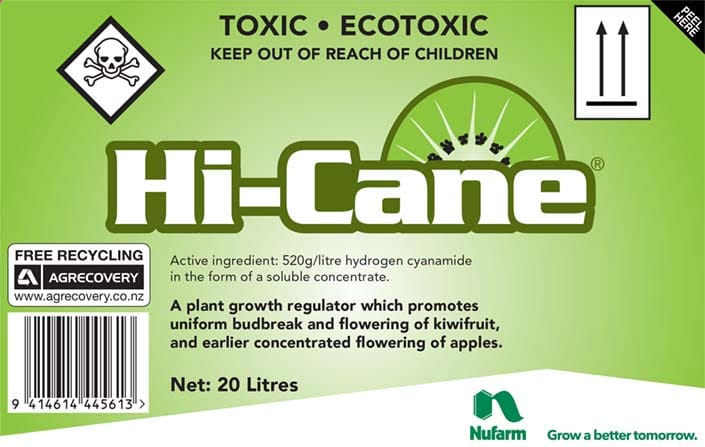
How should you protect yourself?
Understanding the product’s you are working with, and taking appropriate steps to manage personal safety, the safety of others and the environment around you, is vital. Key points to be considered:
- Read the Label
- Personal Protective Equipment (PPE)
- Storage and Handling
- Environment & People
- Other precautions
- Accidents and Emergency numbers
Personal Protective Equipment (PPE)
When mixing and applying chemicals, appropriate PPE should be worn. PVC has been considered suitable as in the past this was generally all that was available. However, ph7 International do not generally recommend the use of PVC spray suits unless the manufacturers of these suits can provide evidence of their effectiveness as a barrier against chemical agents.
We do recommend fully tested Chemical Coveralls such as the Alphatec 3000 or 4000 for spraying dilute chemicals, and Chemical Aprons such as the Alphatec 4000 for the mixing of concentrated chemicals.
In conjunction with these, Chemical Gloves such as Ansell Alphatec 58-535 should be always be worn.
When it comes to respiratory protection, there are no shortcuts. Respiratory protection compliant with AS/NZ standards should always be used. In the absence of a spray hood, a full face respiratory mask is recommended with A1 Organic Gas & Vapour cartridges with added P2 particulate filters. Half masks and goggles could be used in light spray environments.
Storage and Handling
As with all chemicals storage should be such that the risk of damage to containers is minimised and that persons are made aware of the hazards on site.
- The use of containment trays for storage is advised so that in the event of a leak, product will be contained in one location.
- It is also advisable to have a chemical spill kit on hand to ensure that accidental spills are appropriately handled, recovered and disposed of.
- Follow the manufacturers instructions for disposal and clean-up.
- Appropriate signage at the farm gate and at the storage location should indicate the type of hazard the product represents.
Environment & People
- People in the general area, but not handling the spray, may be exposed. It is advisable to ensure that where there is incidental risk, long sleeve shirts, long pants or overalls, chemical resistant boots and gloves should be worn. Eyes should also be protected from exposure.
- Be aware of the potential for cross contamination from wearing protective clothing (which may have been exposed to the spray) when getting into a vehicle and then later getting into the same vehicle with normal clothes on.
- For at least five days after spraying, it’s essential to:
- Wear gloves when handling sprayed vines.
- Keep animals out of the mixing and spraying area.
- Non- grazing animals should not be exposed to any residues on grass for three days and grazing animals for seven days.
- Dogs are particularly sensitive to Hi-Cane so keep them restrained and well away from spraying.
- Spray drift:
- The first priority when spraying is to take a responsible attitude, to adopt ‘good agricultural practices’ based on common sense, country courtesy and due care.
- Follow some simple procedures and you can ensure that any spray is confined to the area where you’re applying it.
- Adjust the speed of the sprayer fan so any spray only travels across the row being treated;
- Direct spray inwards from your boundaries;
- Shut off your sprayer at the end of rows;
- Only spray when the wind speed and direction are suitable.
- Do not expose workers or other people directly or via spray drift. Everyone without protection must leave the area.
- Tell your neighbours about the spraying and ask them to keep children and pets away from your boundaries.
- Hi-Cane is toxic to bees, so the spray must not contact plants in flower. In addition, the spray must not contact green plants and leaves because Hi-Cane burns vegetation. Casuarinas, gum trees and lemon trees are particularly vulnerable.
Other precautions
- When work stops for breaks or meals, it is important to wash gloves and rubber boots before taking them off, and then thoroughly wash hands with soap and water.
- Be aware of the potential for cross contamination on coveralls/clothing and touching them during a break. Where possible, take off any clothing which may have been exposed to spray.
- At the end of the day, wash all protective clothing and equipment separately and wash gloves inside and out before storing.
- Shower and put on clean clothing and do not wear the same clothing the next day unless it has been washed.
- Re-entering the orchard:
- You should allow spray to dry completely before re-entering the orchard.
- For five days after spraying, gloves must be worn by workers in contact with kiwifruit canes.
- Alcohol:
- Must not be consumed immediately before, during or for a week afterworking within the vicinity of the sprayer and/or the mixing and loading area. It is your responsibility to issue this warning before any work with Hi-Cane begins on your property.
- In some people, the combination of Hi-Cane and alcohol causes what is known as a cyanamide flush, a condition which causes a bright red flush to the skin. Other symptoms are dizziness, headache, shortness of breath and rapid breath, conditions which in most cases are only temporary. In exceptional cases, the symptoms last for 24 hours and in extreme cases oxygen respiration may be necessary
People who discover they are allergic to this degree need to avoid further contact.

In the event of an accident
- Swallowing: Give a glass or two of water or milk but DO NOT induce vomiting. Take to hospital without delay.
- Splashes & Spills: If Hi-Cane is accidentally splashed in the eyes, rinse thoroughly with clean water for 15 minutes with the eyelids open and seek medical attention immediately. Eye protection will prevent this type of exposure.
- If Hi-Cane is accidentally spilled and comes in contact with the skin remove all contaminated clothing immediately. Thoroughly wash with large amounts of soap and water. Seek medical attention if necessary.
- Put on clean clothing, not the contaminated clothing previously being worn. Wash any contaminated clothes before using again.
- In a severe case, it is recommended that doctors use a cortisone ointment containing antibiotics for treatment which will minimise secondary infections.
Emergency numbers
On work sites and in the orchard, accidents occur without warning. Being prepared to take the basic steps in an emergency will minimise any injury so post all emergency telephone numbers where they can be seen with a map to the nearest emergency centre.
It is your responsibility to ensure that everyone on the job site understands the emergency procedure in case of an accident.
Nufarm Emergency Phonelink (New Zealand):
O8OO 651 911 toll free 24 hours
National Poisons Centre (New Zealand)
03 474 7000
For advice on the correct apparel, respiratory and first aid devices to prevent harm from the substances your business is using, contact ph7 International on 0800 323 223, enquiries@dilnz.co.nz or via the website.
ph7 International Limited would like to acknowledge the NZ Tree Crops Association for their invaluable input in the writing of this blog. NZ Tree Crops can be contacted via their website at http://www.treecrops.org.nz

